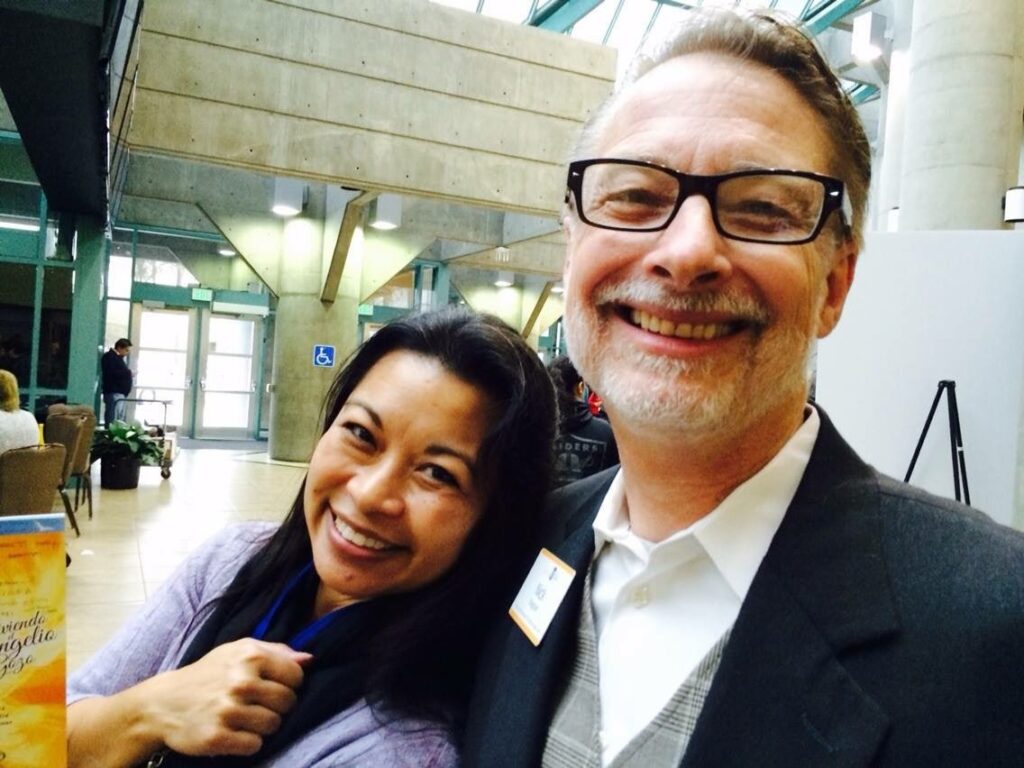As you know, Pope Benedict XVII is in the midst of his first visit (as pope) to the United States. Realizing that America is one of the most religiously diverse countries in the world, one of the events he participated in was an ecumenical prayer service at Saint Joseph’s Church in Yorkville, New York. During his remarks, he said:
Only by “holding fast” to sound teaching (2 Thess 2:15; cf. Rev 2:12-29) will we be able to respond to the challenges that confront us in an evolving world. Only in this way will we give unambiguous testimony to the truth of the Gospel and its moral teaching. This is the message which the world is waiting to hear from us. Like the early Christians, we have a responsibility to give transparent witness to the “reasons for our hope”, so that the eyes of all men and women of goodwill may be opened to see that God has shown us his face (cf. 2 Cor 3:12-18) and granted us access to his divine life through Jesus Christ.
I think this passage raises several important questions for catechumenate team members, who are certainly working hard to “hold fast” to sound teaching. Here are some things that crossed my mind.
- What does “sound teaching” look like? How do I know if it is sound?
- What are some of the “challenges that confront us in an evolving world”? What is an actual challenge that I personally face every day that my faith helps me respond to?
- Do I give “unambiguous testimony to the truth of the Gospel”? Hey, I went to graduate school. I excelled in ambiguity. But when I am talking with catechumens, how successful am I at giving a strong and clear testimony to the truth of the Gospel?
- Am I giving a “transparent witness to the ‘reasons for hope'” to men and women of goodwill? What about that cashier who was chatting with her friend instead of ringing up my eggs and bread? What about that guy who cut in front of me to grab the lone floor person’s attention at Home Depot?
I read a story a couple of months ago about a soldier who is going back to Iraq for his fourth tour. He volunteered. When a reporter asked him why he is going back, he said it was because he felt loved there. He knew the other soldiers in his unit would give their lives for him, and he for them. He said that when he was home, here in the U.S., he felt like people on the highway would just as soon run him into the retaining wall as look at him.
Sure, his story may be a little extreme, but how many others like him do we encounter everyday? People who don’t see the “reasons for hope” that we do? The questions Pope Benedict raises, it seems to me, are the kinds of question that should be most on our minds and hearts as we try to teach the faith.
If you want to comment on any of my questions or raise some of your own, hit the comment link. And I’ll be the first one to comment!
(Thanks to Whispers for the text of Pope Benedict’s address.)
















The idea of “sound teaching” always catches my attention. I’m pretty sure what “unsound teaching” is. Sound teaching is a little hard to figure. One thing I’m pretty certain of. It can’t be found in books. Or not only in books. People today learn by watching and doing. The catechumens have to see me doing gospel things and, then they have to imitate me doing it. (And not just me, thank God. The whole community is their witness.)
Very thought-provoking questions. Not only trying to figure out what sound teaching is but “doing gospel things” and your examples are what we all encounter. We evangelize by actions and do they speak louder than the words we put forth? We are called to wear our faith on our sleeves. One thing I would add is by living our lives this way, we put forth an attractive alternative that draws others to Christ.
Hi Joanna. Great thoughts. I like the last line of your comment especially.
Great topic! One challenging aspect that is raised by catechumens and sponsors is the labeling of “sound teaching” as conservative or liberal, often by the media.
Is “sound teaching” a return to Roman Catholicism in the 18th or 19th century? If you’re a catechumen and read a Washington Post story that ran in the St. Louis Post-Dispatch today, you might think so:
“Traditional Catholics have been over the moon since Benedict was installed and started reviving ancient aspects of church life, including making it easier for priests to say the Latin mass and encouraging the wider use of Gregorian chants and renaissance music for worship, as opposed to contemporary spiritual genres such as jazz or gospel. They see his clothing choices as a powerful symbolic message saying one thing to a contemprorary world: The Catholic Church isn’t changing–not on clothes, and certainly not on abortion or gay marriage or priestly celibacy.”
With this type of media coverage–on the news analysis pages, no less–it’s no wonder catechumens and Roman Catholics alike are left scratching their heads.
I’m in complete agreement with the previous comments. The fruits of “sound teaching” are harvested when catechumens and all Roman Catholics live and act as Christ taught–to love one another.
Speaking of “walking the walk”…
http://www.washingtonpost.com/wp-dyn/content/article/2008/04/11/AR2008041103544.html?hpid=topnews
“No one has greater love than this, to lay down one’s life for one’s friends.” (John 15:13)
The medieval guilds were on to something when they set up the structure for training future tradesmen. Christianity is not something we can learn from a textbook, or even a lecture. We must learn by doing. Those seeking full membership in the church are the apprentices, catechists (and all the faithful, for that matter) are the journeymen. While we have grasped the basic skills of our craft, we still have much to learn from the Master!
Hi Joe. Wow, that’s such a sad story. Thanks for sharing the image of the medieval guilds.
Nick
I wish I could take credit. Better minds than mine are responsible…
“this comprehensive formation includes more than instruction: it is an apprenticeship of the entire Christian life” (GDC #67)
Another Quote from B16 (At St. Patrick’s Mass)I think it is certainly germane to this topic:
“I would like to draw your attention to a few aspects of this beautiful structure which I think can serve as a starting point for a reflection on our particular vocations within the unity of the Mystical Body.
“The first has to do with the stained glass windows, which flood the interior with mystic light. From the outside, those windows are dark, heavy, even dreary. But once one enters the church, they suddenly come alive; reflecting the light passing through them, they reveal all their splendor. Many writers — here in America we can think of Nathaniel Hawthorne — have used the image of stained glass to illustrate the mystery of the Church herself. It is only from the inside, from the experience of faith and ecclesial life, that we see the Church as she truly is: flooded with grace, resplendent in beauty, adorned by the manifold gifts of the Spirit. It follows that we, who live the life of grace within the Church’s communion, are called to draw all people into this mystery of light.
“This is no easy task in a world which can tend to look at the Church, like those stained glass windows, “from the outside”: a world which deeply senses a need for spirituality, yet finds it difficult to “enter into” the mystery of the Church. Even for those of us within, the light of faith can be dimmed by routine, and the splendor of the Church obscured by the sins and weaknesses of her members. It can be dimmed too, by the obstacles encountered in a society which sometimes seems to have forgotten God and to resent even the most elementary demands of Christian morality. You, who have devoted your lives to bearing witness to the love of Christ and the building up of his Body, know from your daily contact with the world around us how tempting it is at times to give way to frustration, disappointment and even pessimism about the future. In a word, it is not always easy to see the light of the Spirit all about us, the splendor of the Risen Lord illuminating our lives and instilling renewed hope in his victory over the world (cf. Jn 16:33).”
Thanks for the quote Joe. I like the very last line the best. I think we can sometimes forget the Light of Christ is everywhere, not just inside the church.